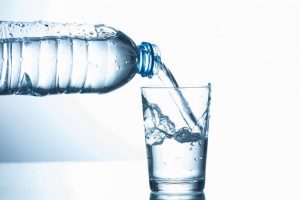 As the warm weather continues, the dangers of working outside also increases. Knowing how to work safely in hot weather can help prevent heat stress and heat stroke. Heat stroke is the most serious heat-related disorder and occurs when the body can no longer control its temperature. The body temperature can rise to 106 degrees Fahrenheit or higher within 10 to 15 minutes and heat stroke can cause death or permanent disability if emergency treatment is not provided. Other heat-related disorders include heat exhaustion, heat cramps and heat rash.
As the warm weather continues, the dangers of working outside also increases. Knowing how to work safely in hot weather can help prevent heat stress and heat stroke. Heat stroke is the most serious heat-related disorder and occurs when the body can no longer control its temperature. The body temperature can rise to 106 degrees Fahrenheit or higher within 10 to 15 minutes and heat stroke can cause death or permanent disability if emergency treatment is not provided. Other heat-related disorders include heat exhaustion, heat cramps and heat rash.
Heat stroke occurs when the body no longer sweats and body temperature reaches dangerous levels. Symptoms of heat stroke include:
- Dry, hot reddish skin and lack of sweating
- High body temperature
- Strong, rapid pulse
- Chills
- Confusion
- Slurred speech
Heat exhaustion is the body’s response to the loss of water and salt, typically through sweating. Symptoms of heat exhaustion include:
- Excessive sweating
- Weakness or fatigue
- Dizziness and/or confusion
- Clammy skin
- Muscle cramps
- Flushed complexion
Heat cramps are painful cramps in the body’s muscles due to low salt levels and are typically caused by excessive sweating. Symptoms of heat cramps include:
- Muscle pain usually in the abdomen, arm or legs.
- Muscle spasms usually in the abdomen, arm or legs.
Heat Rash is an irritation of the skin caused by excessive sweating. Symptoms of heat rash include:
- Red cluster of pimples or small blisters
- Usually on neck and upper chest, groin area, under the breasts, and in elbow creases.
Ten Hot Weather Safety Tips:
- Stay hydrated. Drink plenty of fluids.
- Avoid dehydrating liquids. Alcohol, coffee, tea and caffeinated soft drinks can hurt more than help.
- Wear protective clothing. Lightweight, light-colored and loose-fitting clothing helps protect against heat. Change clothing if it gets completely saturated.
- Pace yourself. Slow down and work at an even pace. Know your own limits and ability to work safely in heat.
- Schedule frequent breaks. Take time for rest periods and water breaks in a shaded or air conditioned area.
- Use a damp rag. Wipe your face or put it around your neck.
- Avoid getting sunburn. Use sunscreen and wear a hat if working outside.
- Be alert to signs of heat-related illness. Know what to look for and check on other workers that might be at high risk.
- Avoid direct sun. Find shade or block out the sun if possible.
- Eat smaller meals. Eat fruits high in fibre and natural juice. Avoid high protein foods.
Stay safe this summer, keep hydrated.
In June 2017 we had a weather warning heat health watch. Read here for further details.
Contact us should you require further information.
 As the warm weather continues, the dangers of working outside also increases. Knowing how to work safely in hot weather can help prevent heat stress and heat stroke. Heat stroke is the most serious heat-related disorder and occurs when the body can no longer control its temperature. The body temperature can rise to 106 degrees Fahrenheit or higher within 10 to 15 minutes and heat stroke can cause death or permanent disability if emergency treatment is not provided. Other heat-related disorders include heat exhaustion, heat cramps and heat rash.
As the warm weather continues, the dangers of working outside also increases. Knowing how to work safely in hot weather can help prevent heat stress and heat stroke. Heat stroke is the most serious heat-related disorder and occurs when the body can no longer control its temperature. The body temperature can rise to 106 degrees Fahrenheit or higher within 10 to 15 minutes and heat stroke can cause death or permanent disability if emergency treatment is not provided. Other heat-related disorders include heat exhaustion, heat cramps and heat rash.